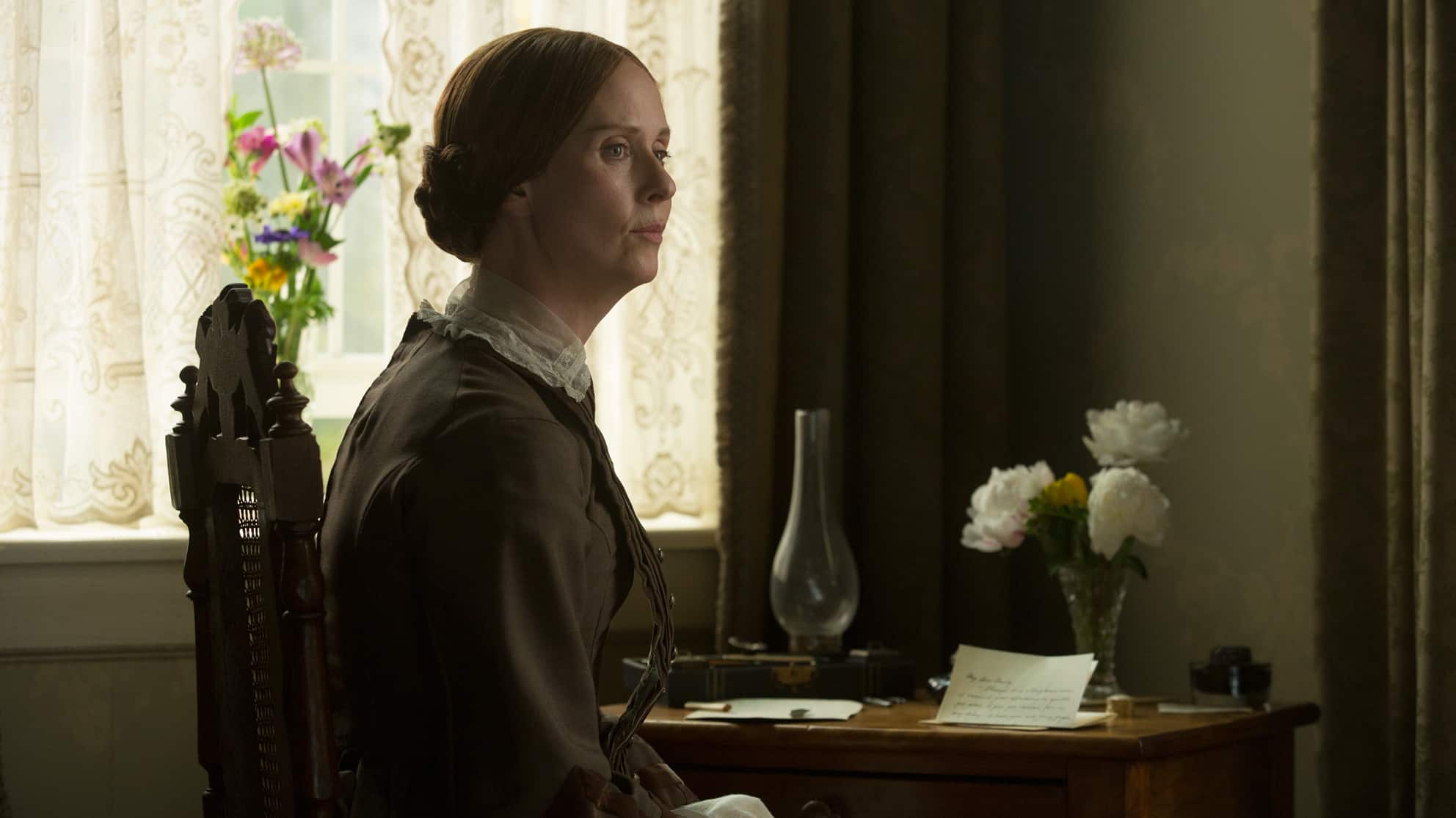This is my letter to the world,
That never wrote to me,–
The simple news that Nature told,
With tender majesty.
Her message is committed
To hands I cannot see;
For love of her, sweet countrymen,
Judge tenderly of me!
~Emily Dickinson
Terence Davies’ A Quiet Passion follows the story of American poet, Emily Dickinson. The film traces her life from a young woman undergoing religious training, to a middle-aged woman struggling with how to be in a world that largely misunderstood her – a world she eventually retreated from completely. This film showcases her incredible, constant, steely resolve, and the way her bravery and her refusal to fulfill societal expectations also wore her down. Here’s what we learned:
- She Lived As A Recluse: Often suffering spates of depression, she kept largely to herself and her immediate family. Later in her life, she rarely left the house and spoke to visitors from behind a door, rather than face-to-face.
- She Suffered From Bright’s Disease: A kidney disease causing seizures, this eventually led to her death in 1886, at the age of 55.
- She Was Celebrated Posthumously: Of some 1800 poems, fewer than a dozen were published before her death. She is now revered as one of America’s most prolific poets.
- She Was An Early Feminist: She died long before American women got the vote in 1920; nevertheless, she refused to be barred by convention. A seminary school dropout, she spurned marriage and spent her time writing honest, thoughtful poetry that shines as a beacon in a repressive, puritanical society.
- Her Poetry Eschews Typical Grammatical Structure: She was angered by editors who would “clean up” her writing. Her poetry tended to contain short lines, unconventional capitalization and imperfect rhyme. She would often write about death, immortality and unrequited love.



 Follow Us On Instagram
Follow Us On Instagram
